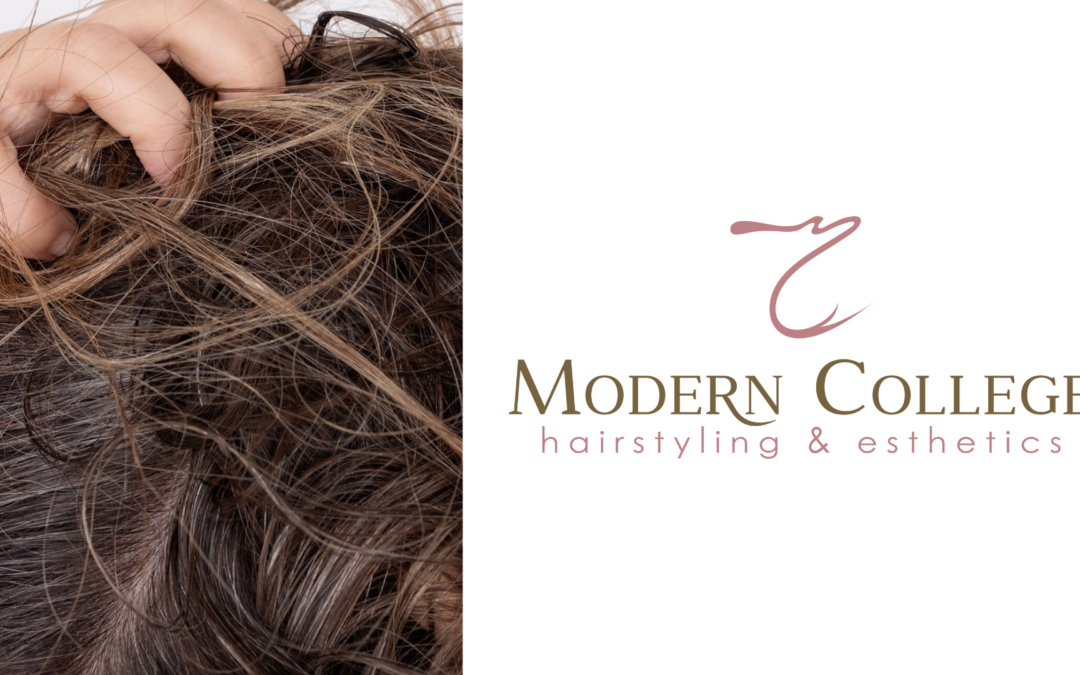Let’s be honest – bugs are the last thing we want to find in our hair. Unfortunately, head lice are as common as they are frustrating.
Knowing how to treat these situations or at least provide guidance to clients who are dealing with head lice is a valuable tool for any aspiring hairstylist. As having lice can be embarrassing, especially for an adult who might think they’re just a problem for school aged children, it’s important to know how to deal with these issues effectively, and with some sensitivity too.
In this guide, we’ll cover the key steps hairstylists should take when helping clients with a potential lice problem.
Recognizing the Signs of Head Lice
The first step in dealing with head lice is to recognize their signs.
Often, your clients will be aware of the issue, but other times they might simply have an itchy or tingling feeling atop their scalp. As such, during consultations with them, it might come down to you having to make that assessment.
Fortunately, lice are relatively easy to identify. Adult lice are small, brown insects that might move through the hair, while nits (or lice eggs) are tiny, oval-shaped, typically paler, and firmly attached to the hair shaft. Nits are also often mistaken for dandruff.
To make sure you’re thorough, consider doing a close inspection with a fine-toothed comb and even a magnifying glass (if you have one) or your phone’s camera zoom. Part the hair in sections, paying particular attention to the nape of the neck and behind the ears. Though, they can be found anywhere on a person’s scalp.
Helping Clients Deal with Lice
If you spot or suspect that your client has head lice, you’re going to have to postpone their regular trim or other appointments until they’ve undergone lice treatment. Otherwise there’s a risk of lice potentially spreading at the salon.
Some of the usual tips for dealing with lice that can be done at home include:
- Removing lice manually. This can be done by first wetting one’s hair and then using a fine-tooth comb or special nit comb to slowly remove them. This should be repeated a few times a week to make sure all are removed.
- Point them towards treatment products. Among the most common are shampoos containing permethrin, a chemical compound that is toxic to lice.
- There are also lotions that can be applied to dry hair and then rinsed out after about 10 minutes. These tend to be more irritating so it may be best to speak with a healthcare provider first.
While treating themselves, they should also turn their attention to their wider household:
- Ask them to check with household members. This includes adults, children (especially ones who go to school), and even pets.
- If children are found to have lice, advise their school and the parents of their playmates. It may require keeping them at home a few days until they are treated.
- Avoid sharing any combs, hats, or other items that come in contact with your hair or that of anyone in your household.
- To be extra thorough, wash all bedding, clothing, and especially with hot water. If you can, dry them at high heat for at least 20 minutes too as its possible lice have fallen onto the fabric.
- For items that cannot be washed, seal in an airtight bag for two weeks and then check and clean them by hand after.
Salon Protocols for Lice Management
Maintaining a clean and hygienic salon environment is essential for any successful business, especially when dealing with lice. After suspecting or confirming that a client has lice, be sure to follow strict sanitation protocols.
Begin by thoroughly disinfecting all tools used during the appointment, including combs, brushes, and scissors. Soak these items in a disinfectant solution that is effective against lice and nits.
Next, clean and disinfect your workstation, including the salon chair, cape, and any surfaces the client may have touched. Any materials that came into direct contact with the client’s hair, such as towels or disposable capes, should be either discarded or washed in hot water and then dried at a high temperature too.
Wrapping Things Up
As a future hairstylist, your role sometimes extends beyond cutting and styling hair. Head and scalp health might also fall under our purview, and it helps to be aware of as many conditions or issues as possible to offer the best service and professional advice.
If you’re passionate about health and safety in the beauty industry, consider exploring Modern College’s beauty programs. Our hairstyling program preps you with the practical, hands-on skills and the knowledge you need to thrive as a hairstylist. Contact us to learn more!

